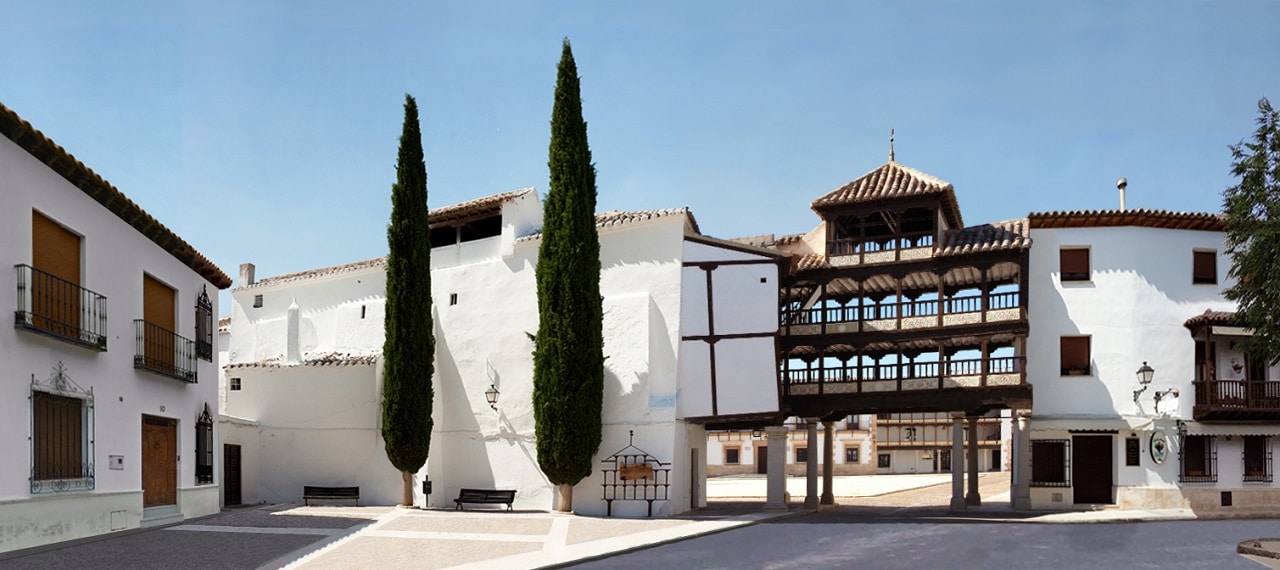
If we consider a trip through the beautiful towns of Toledo, we will have to make a selection because there are many. This Castilian province of La Mancha has a privileged nature dominated by the Toledo Mountains and Tagus and Tiétar rivers, which ends up leading to the first.
But, above all, the Toledo plain has beautiful towns full of history and monuments. Likewise, it has landscapes with deep literary roots, since you must not forget that the unparalleled Don Quixote lived many of his adventures in these lands. All this configures a province that you should know well. So that you have a guide, we are going to show you our selection of beautiful towns of Toledo.
The Puebla de Montalbán
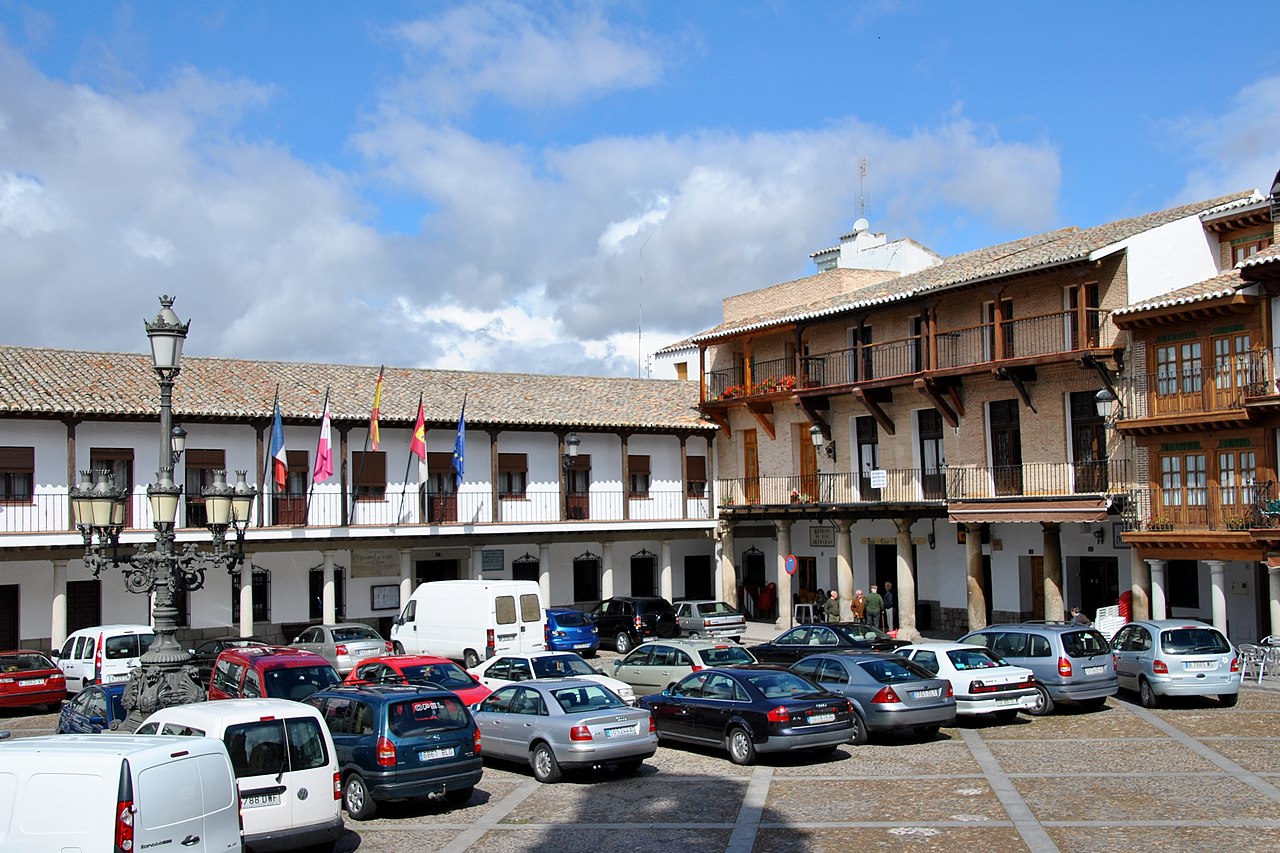
Plaza Mayor of La Puebla de Montalbán
If we were talking about literary resonances, this town was the cradle of Ferdinand de Rojas, Author of La Celestina. Belongs to the region of Torrijos, almost in the center of the province, and to the fertile valley of the Tagus.
But La Puebla stands out for its extensive monumental heritage. As nerve center is the Plaza Mayor, typically Castilian, in which you can see the church of Our Lady of Peace, which is transitional Gothic to Renaissance. You will also find in the square the Town Hall building and the Palace of the Counts of Montalbán, a spectacular Renaissance construction with Plateresque touches.
We also advise you to visit in this town the hermitages of Nuestra Señora de la Soledad and Santísimo Cristo de la Caridad, the first being baroque and the second classical; the Franciscan convents and the Conceptionist nuns and the Saint Michael's Tower, rest of an old church, which is one of the symbols of the town.
But you should also visit, precisely, the Celestine Museum to better understand the author and the social context of this great work of our letters. Also, leaving La Puebla, you have the Tagus Bridge, dating from the XNUMXth century, and, about eight kilometers away, you will find the spectacular Burujon Canyons, capricious clay formations that will remind you of the Grand Canyon of Colorado.
Orgaz, another of the beautiful towns of Toledo
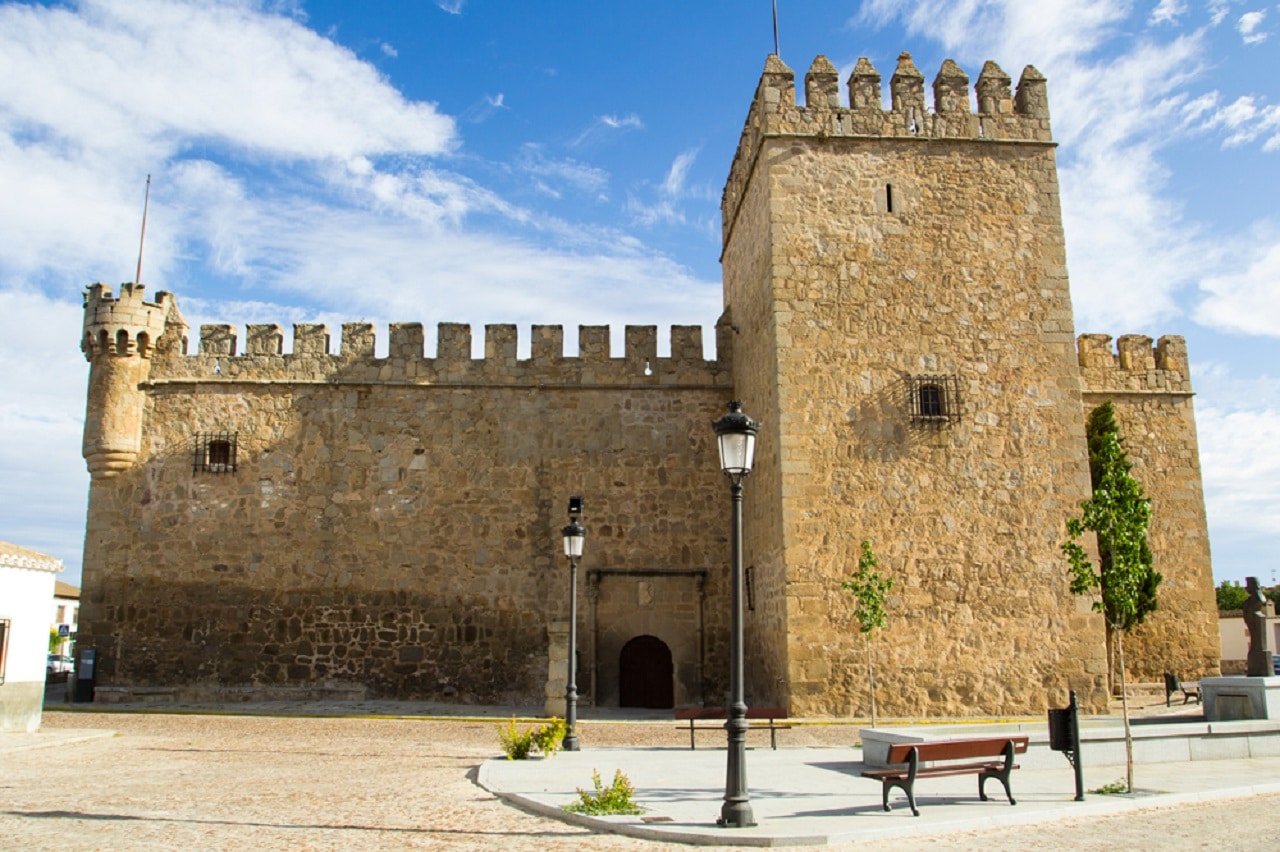
Castillo de Orgaz, one of the most beautiful villages in Toledo
Located at the foot of the Sierra de Yébenes and in the Sisla region You will find this beautiful town that we also include in the beautiful towns of Toledo for its impressive monumental heritage.
To start your tour of Orgaz, you can visit the Plaza Mayor, but also the church of Santo Tomás Apostol, built by Alberto de Churriguerra in the eighteenth century, and the Orgas castle, which dates from the XIV and is one of the emblems of the town. You will be impressed by the homage tower, with its twenty meters of height.
There are also remains of the old wall in Orgaz and two of the four gates that crossed it: the arches of Belén and San José. Likewise, the town has several historical bridges, among which the one of the five eyes, built in times of Carlos III, and with several hermitages such as those of El Socorro and La Concepción.
On the other hand, the large number of manor houses that populate its streets. As an example, we will mention the houses of Count Tierrapilares, the Calderón de la Barca, Ioseph or the Vizcaíno. And, finally, Orgaz and its surroundings stand out for their enormous archaeological value.
As an example of this, five kilometers from the town is the district of arisgotas, in which you will find an interesting Visigoth Art Museum. Likewise, on La Tocha hill you can see two menhirs dating back fifteen hundred years, in Torrejon there is a Roman necropolis and in Villaverde you can find remains of a bridge and a road from the same period.
Ocaña and its beautiful Plaza Mayor
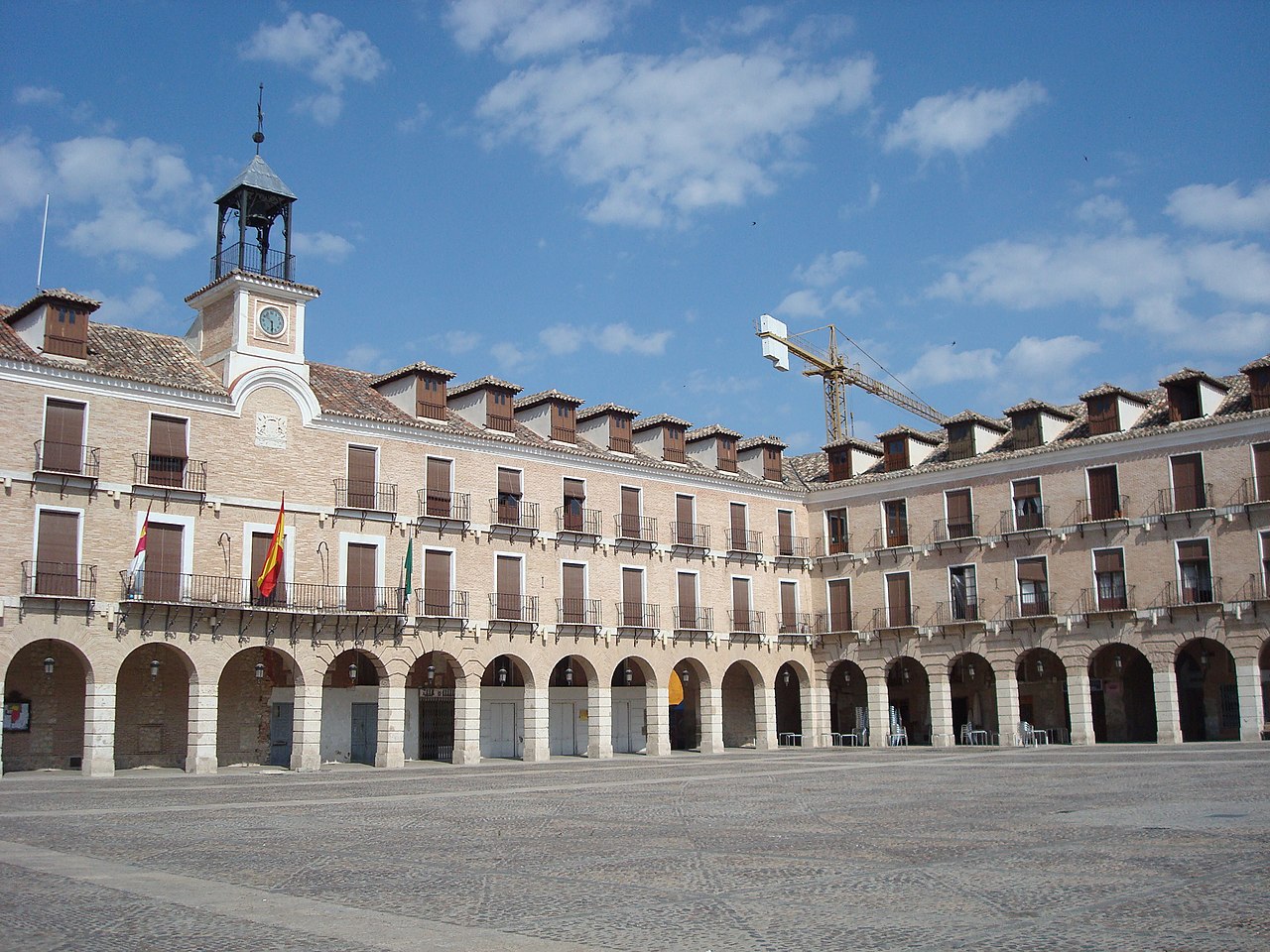
The magnificent Plaza Mayor of Ocaña
This other wonderful town is located in the northeast of the province of Toledo, bordering on Aranjuez, which, as you know, already belongs to Madrid. One of its emblems is its imposing Plaza Mayor, built in the 2002th century with a baroque appearance. Since XNUMX, moreover, it is of cultural interest.
We also recommend you to visit in Ocaña the Big Fountain, a Renaissance jewel by Juan de Herrera in 1578, and Cardenas Palace, from the same period, but built following the canons of the Gothic, although in transition to the Renaissance. Equally contemporary is the Lope de Vega Theater, former College of the Society of Jesus.
On the other hand, there is no shortage of magnificent religious monuments in Ocaña. The parish church of Santa María de la Asunción It was built in the XNUMXth century in a neoclassical style on the remains of a previous one which, in turn, was built from an old mosque. The parish church of San Juan Bautista it is older, since it is dated in the XIII, although it underwent several later reforms. Despite this, it is included in the Mudejar art of Toledo.
La bell tower of the church of San Martin It is the only element that remains of this and has been declared of cultural interest. Built at the end of the XNUMXth century, it is in the Herrerian style. Likewise, Ocaña offers you magnificent conventual buildings. Among these, those of Santo Domingo de Guzmán and Santa Catalina de Siena, both of Renaissance style. And, already on the outskirts, you will find the Old Fountain, probably from Roman times.
Finally, Ocaña also has literary roots. Don died in the village Rodrigo Manrique, to which his son dedicated the Coplas to the death of his father. And also in this town is set the famous work of Lope de Vega Peribáñez and the Commander of Ocaña. As if that were not enough, he was born there Alonso de Ercilla, Author of The Araucana.
wobbly
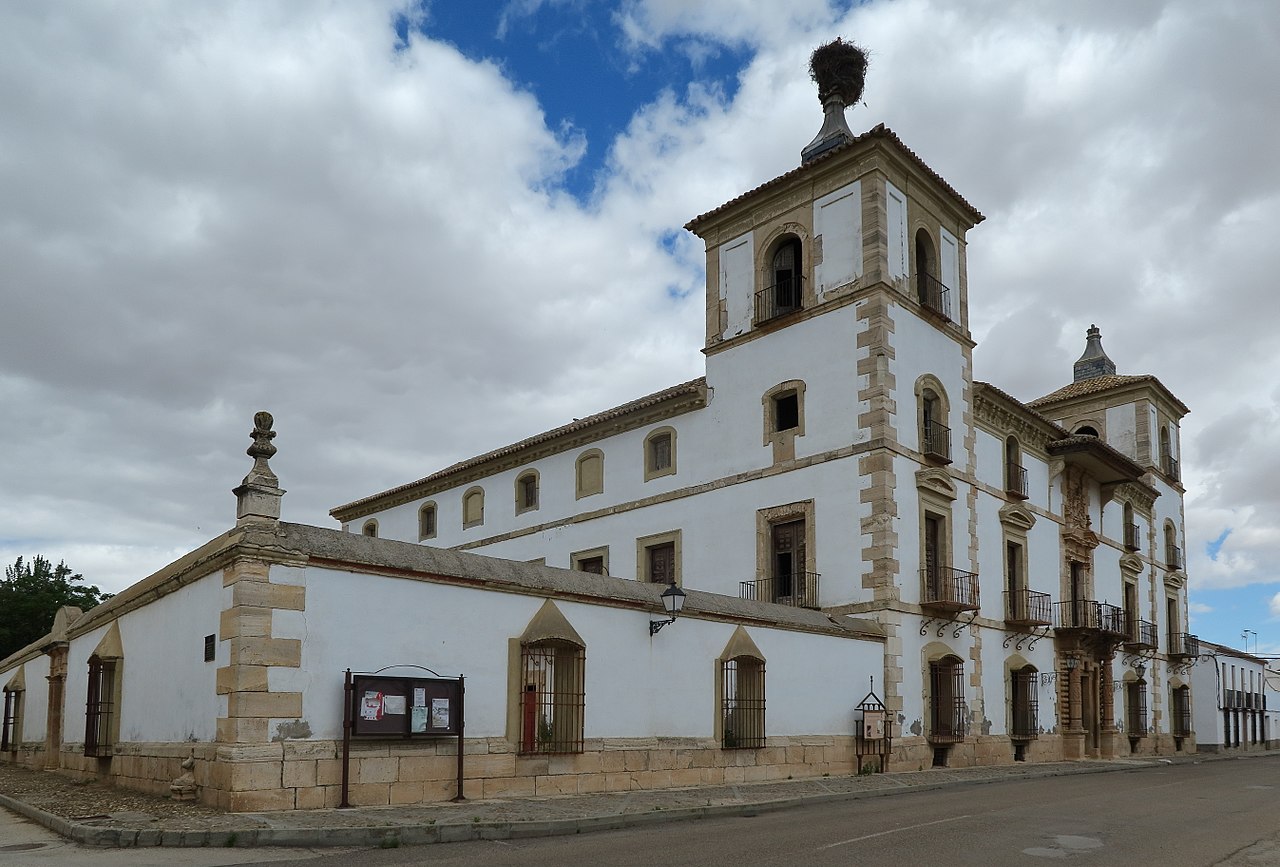
House of the Towers, in Tembleque
It is located to the east of the province of Toledo and about fifty-five kilometers from its capital. It also offers you a wonderful Plaza Mayor typically from La Mancha. With a square floor plan, it has porticoes supported by columns and corridors in its upper part. Built between the XNUMXth and XNUMXth centuries, it has baroque features and precious wooden ornamentation. As for this, the main access stands out, covered by a cantilever with a hipped viewpoint.
It is also baroque from the XNUMXth century. house of towers, which has been declared a historic artistic monument and stands out for its beautiful façade. And from the same period is that of Postas or Old Barracks, although more austere.
On the other hand, the most important religious monument that you will find in Tembleque is the church of Our Lady of the Assumption. It was built in the XNUMXth century and has transitional features from the Gothic to the Renaissance. Outwardly, it stands out for its imposing tower and, as for its interior, it houses several chapels, among which those of Jesús Nazareno and the Virgen del Rosario stand out.
The religious heritage of the town of Toledo is completed by the hermitages of La Purísima Concepción, Cristo del Valle, Loreto and San Antón. But more curious is the one from Veracruz due to its octagonal shape ending in a dome.
Escalona, on the banks of the Alberche
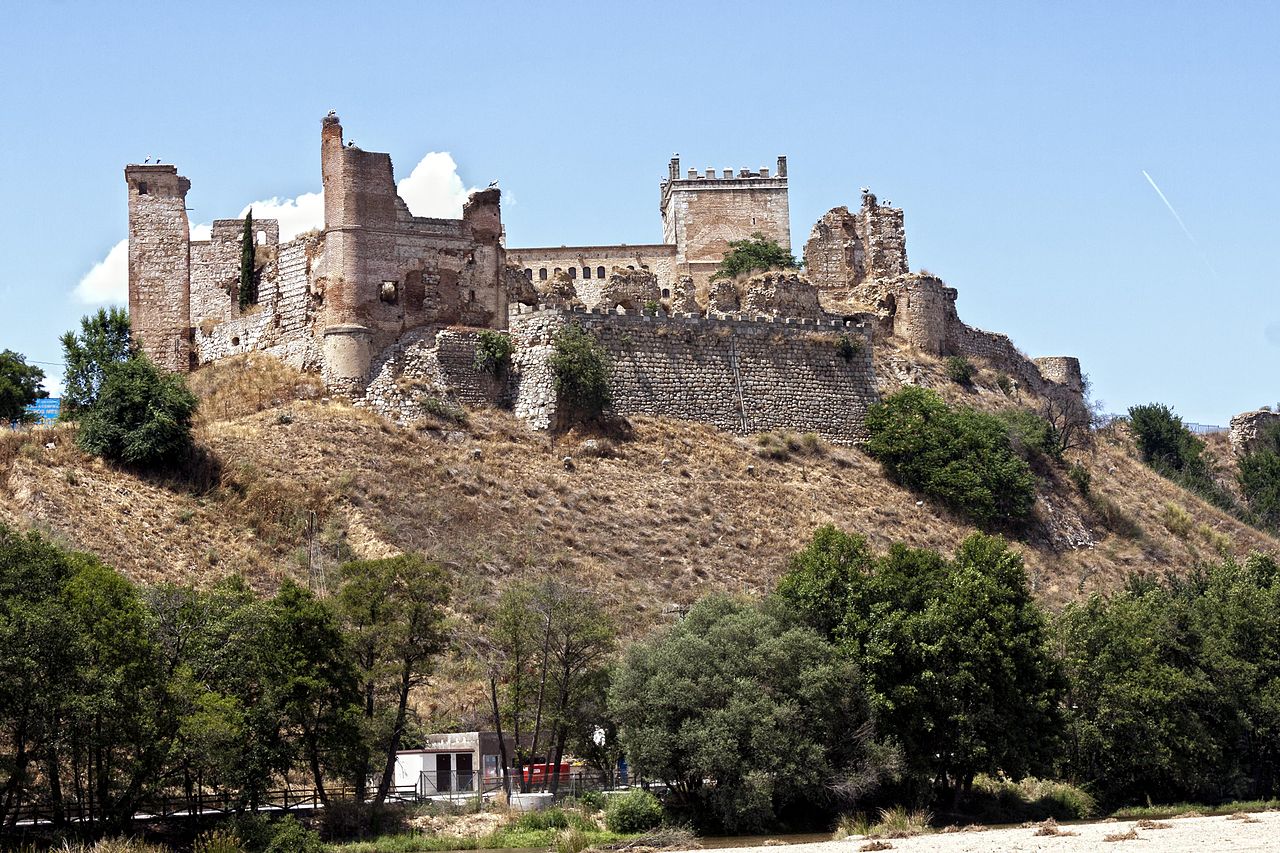
Castillo de Escalona, another of the beautiful towns of Toledo
It also belongs, like La Puebla de Montalban, to the region of Torrijos, although in this case it is on the banks of the Alberche river. It must have been inhabited since ancient times, as Celtic, Roman and Visigoth remains have been found in the area. Already in the Middle Ages, it was of great importance due to its strategic location.
In fact, the great symbol of Escalona is its castle-palace, which receives this name because it consists of the fortress itself and a Mudejar palace. Its existence is recorded in the XNUMXth century, although it is believed that it was even a Roman fortification first. On the other hand, continuing with the literary resonances that we have been explaining to you and as an anecdote, we will tell you that in the castle the Infant Don Juan Manuel, medieval writer who bequeathed us Count Lucanor.
You should also see in the locality the gate of san miguel, on which there is a tower. Beside that of Saint Vincent, are those that are preserved from the old wall. The most important church in Escalona is also consecrated to San Miguel Arcángel, built on a primitive Romanesque temple. Inside you can see a beautiful baroque altarpiece. Likewise, the religious heritage of the town is completed by the Convent of the Franciscan Conceptionists. But Escalona also offers you a typical Castilian square. It is Don Juan Manuel's, in which is the council house, today Municipal Library with a small museum, and a nice bandstand.
On the other hand, Escalona has known how to reinvent itself as an urban art scene to attract tourism. In its streets you can see numerous samples of the work of the street artist Mr.Stroke. And, finally, if you visit the town in summer and feel like taking a bath, you have a river beach on the banks of the Alberche river. From it, you will also see a beautiful bridge from the XNUMXth century.
In conclusion, we have shown you some beautiful towns of Toledo. But we could tell you about many others, since this province has really precious ones. As a sample, we will quote you Oropesa, with its two castles and its beautiful Clock Tower; Maqueda, with its Caliphate Gate and its Castle of La Vela; The Toboso, land of the peerless Dulcinea; Consuegra, with its typically La Mancha windmills, or the very Torrijos, with its impressive collegiate church of the Santísimo Sacramento. Don't you think they are enough reasons to visit all these beautiful towns in Toledo?